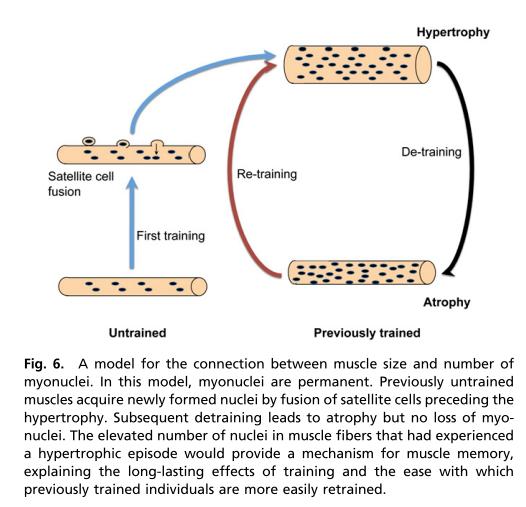I go through spurts of working out. I'll decide to get a gym membership, achieve decent results over six months, and then, for whatever reason at the time, I'll stop and won't exercise at all for several years before I decide to hit the gym again. Not a good plan, I know, but it is what it is.
I notice, however, that when I do go back to working out, I bulk up really fast, way faster than when I first started working out. Biceps, triceps, forearms, and chest all seem to grow at a noticeable rate and I am able to increase my weight by significant proportions in a short amount of time before I eventually steady out.
Atrophy is obviously at work here, but what, exactly, is happening to my muscles when I regress to a sedentary lifestyle that still allows them to bulk right back up at rapid rates when I go back to lifting?
